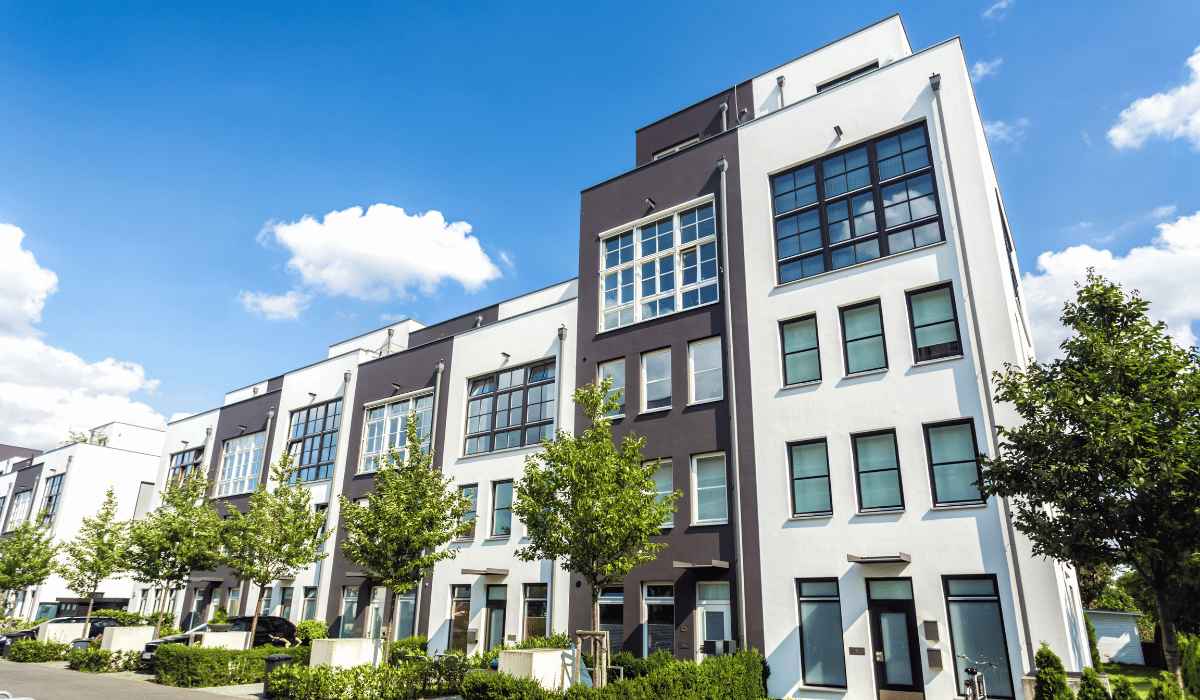Noise Control Considerations: Keeping the Peace in Multi-Unit Dwellings
Reading Time: 4 minutesNoise is a common and significant source of resident complaints in multi-unit dwellings. The impact of noise on resident satisfaction and retention cannot be overstated. Excessive noise disrupts sleep, reduces privacy, and can create a stressful living environment, leading to higher turnover rates. Addressing noise issues effectively is crucial for maintaining a peaceful atmosphere and…

Noise is a common and significant source of resident complaints in multi-unit dwellings. The impact of noise on resident satisfaction and retention cannot be overstated. Excessive noise disrupts sleep, reduces privacy, and can create a stressful living environment, leading to higher turnover rates. Addressing noise issues effectively is crucial for maintaining a peaceful atmosphere and ensuring long-term resident contentment.
Table of Contents
Understanding Noise Transmission

Noise transmission in buildings occurs in two primary forms: airborne and structure-borne.
Airborne noise includes sounds such as conversations, music, and television, which travel through the air and can penetrate walls, ceilings, and floors. Structure-borne noise, on the other hand, involves vibrations that travel through the building structure, such as footfalls, moving furniture, or plumbing noises.
Noise travels through various paths within a building. Walls, floors, and ceilings are common transmission paths, but plumbing systems, ductwork, and even electrical outlets can also facilitate noise transfer. Understanding these transmission paths is essential for implementing effective noise control measures.
Building Design and Construction Strategies
Incorporating soundproofing materials with high Sound Transmission Class (STC) and Impact Insulation Class (IIC) ratings is vital for minimizing noise transmission. STC ratings measure the ability of a material to block airborne noise, while IIC ratings assess the effectiveness of a material in reducing impact noise.
Wall and floor construction techniques play a critical role in noise isolation. For walls, using staggered stud construction, adding mass with multiple layers of drywall, and incorporating insulation or soundproofing mats can significantly reduce noise transmission. For floors, installing floating floors, using resilient underlayments, and sealing gaps can mitigate structure-borne noise.
The placement of mechanical rooms and shared spaces also affects noise levels. Locating these areas away from living spaces and utilizing soundproofing materials can prevent noise from machinery, elevators, or communal activities from disturbing residents.
Resident Noise Management

Establishing clear and reasonable noise policies is essential for managing resident noise. Policies should include designated quiet hours, guidelines for appliance use, and restrictions on loud activities. Communicating these policies through a tenant handbook and resident education programs ensures everyone is aware of the expectations.
Effective communication strategies are vital in addressing noise complaints. Providing a clear process for reporting noise issues and ensuring timely responses demonstrate a commitment to resident well-being. Resolving complaints fairly, with mediation if necessary, helps maintain a harmonious living environment.
Retrofitting for Noise Reduction
Identifying noise problem areas through resident feedback and testing is the first step in retrofitting for noise reduction. Conducting sound tests in various units and gathering resident input helps pinpoint specific issues that need addressing.
Soundproofing solutions for existing walls, floors, and ceilings can include adding additional layers of drywall, installing soundproofing panels, and using resilient channels to decouple surfaces and reduce vibrations. These measures can significantly enhance the noise insulation of a building.
Addressing flanking paths—where noise bypasses barriers through indirect routes such as ducts or structural gaps—is also crucial. Sealing gaps around pipes, ducts, and electrical outlets, as well as using soundproofing gaskets, can mitigate these issues.
Alternative Solutions for a Peaceful Environment

Creating designated quiet zones within the building can provide residents with peaceful areas to retreat to. These zones could include lounges, reading rooms, or garden spaces where noise is minimized.
Offering noise-canceling amenities, such as white noise machines or sound masking systems, can help residents manage background noise. These devices produce soothing sounds that mask unwanted noise, improving the overall acoustic environment.
Technological solutions, like smart home features for noise control, can also contribute to a quieter living environment. Smart thermostats, for example, can regulate HVAC noise, while smart speakers can provide ambient noise control options.
Conclusion
Implementing a multi-faceted approach to noise control is essential for creating a peaceful living environment in multi-unit dwellings. By balancing resident needs with practical solutions, property managers can significantly enhance resident satisfaction and retention. From building design and construction strategies to effective noise management policies and retrofitting solutions, a comprehensive noise control plan ensures a tranquil and comfortable living space for all residents.
Feeling overwhelmed by the complexities of multi-unit property management? Don’t weather the storm alone. Green Ocean Property Management is your trusted partner in navigating the ever-changing landscape of the rental market. We handle the day-to-day tasks so you can focus on what matters most – achieving peace of mind and long-term success.
Contact Green Ocean Property Management today and let us help your multi-unit property thrive!
How We Deal With Fallen Trees
Reading Time: 2 minutes Fallen trees are a hazard and should be dealt with the soonest as possible. In this article, we explain how we act quickly and thoroughly on fallen trees before they cause further damage to your property. Fallen Trees in Massachusetts It is very, very dangerous to be around fallen trees in Massachusetts. We…
Questions to Ask When Qualifying a Vendor
Reading Time: 3 minutes Property managers and landlords should know who to trust when it comes to property maintenance. Here are some questions to ask when qualifying a vendor. Who are vendors? Vendors are the people that go into your house and provide service. These can be plumbers, electricians, handymen, or appliance technicians. We need to make…
How to Create a Rental Property Marketing Plan
Reading Time: 4 minutesA successful rental property marketing plan is essential for attracting and retaining high-quality tenants. Without a solid marketing plan, rental properties may sit vacant for extended periods, leading to lost income for property owners. This blog will discuss creating a rental property marketing plan that works. Define Your Target Market The first step…








